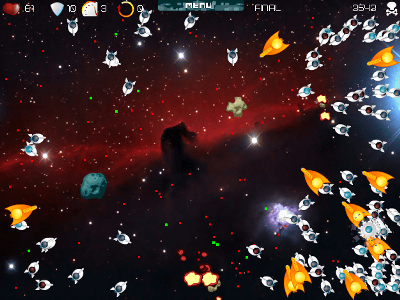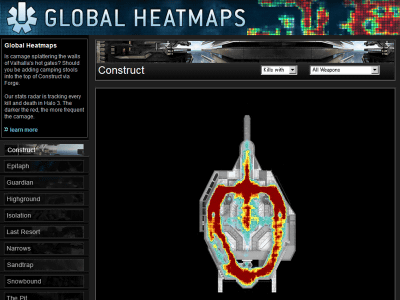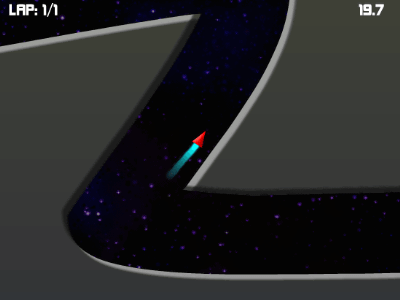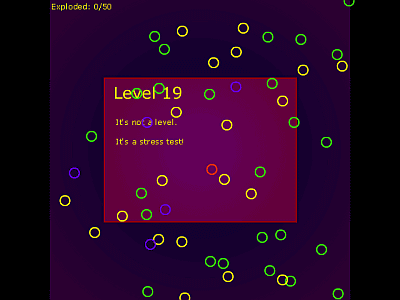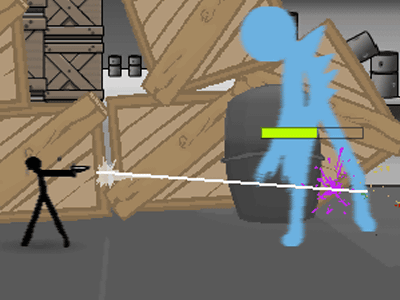Explain so that anyone can understand the basics of the level design of multiplayer games

Level designIs one of the tasks in game development, such as designing the space of the area that appears during the game, arranging obstacles and items, and creating a stage that the player can enjoy. Level designer Bobby Ross is publishing the basis of the level design in shooter games such as FPS and TPS on the official blog, although it is a level design that is not going to be attached to those who are not engaged in game development, It is getting.
The Visual Guide for Multiplayer Level Design - Level Art + Design Portfolio
http://bobbyross.com/blog/2014/6/29/the-visual-guide-for-multiplayer-level-design
◆ 01: factors to consider in design
Players' actions are an important element for level design, stealth acting while hiding, sniper always aiming at head shots, roamers walking around with roamers, a straight line of rushers towards enemy teams, ambushing enemies and campers. Obstacles that greatly affect player's behavior are high and low, and create obstacles that are broken and not broken. The battle that the player performs is to consider a total of 4 levels from a super approaching fight fighting in fighting to a long distance shooting enemies with a sniper rifle.
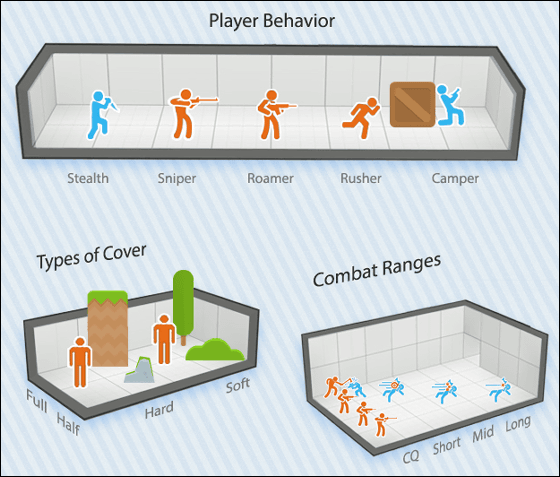
In the level design, the same demand as the player's action is game mode, CTF which takes the flag of the enemy team, CP which controls the enemy team CP · VIP which can score only special players · There is DM competing for the number of defeated people Combine, carry Bomb to destination and set Bomb and take one player to your destination Escort · Predator where player who gains points can be replaced.

◆ 02: Strategy
At least three routes are necessary to pass through to enemy teams. In game mode where you use bombs separately for attacking and defending teams, prepare three entrances to the area where bombs are set and design so that teams defending to that area can arrive earlier than teams attacking.
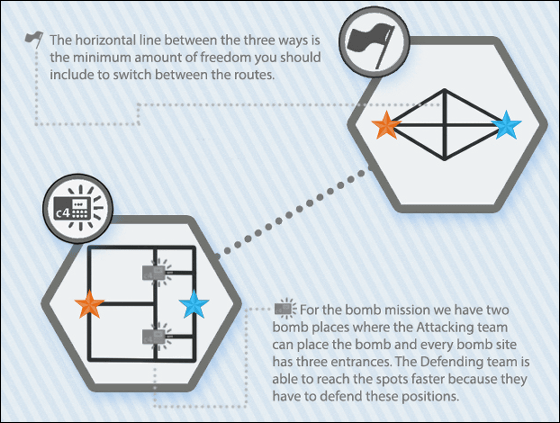
Three routes leading to the enemy line are top, bottom, bottom three types. The top is designed to be more complex towards the center, the center looks the shortest to head towards the enemy team, but it is difficult level to struggle a bit. Bottom is a route suitable for stealth play so that you can change the route near the enemy line so that you can play "Set a trap near the enemy line and move to another route".
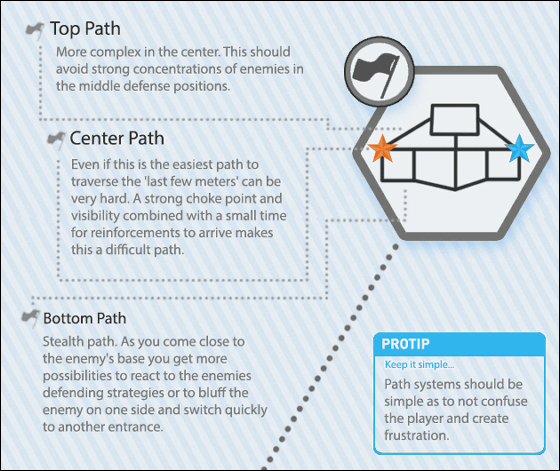
For example, in a map like a jungle, you need both an area with a big rock that is easy to hide at the top and an area that is bright and envious to the enemy. In the bottom we will set up a cave that is dark and hard to find in the enemy near the enemy.

◆ 03: Tactics
When the player aims at the enemy line straight from their own, the area just encountered by players is called a battle area, and at least two entrances to the battle area are prepared, not just one.
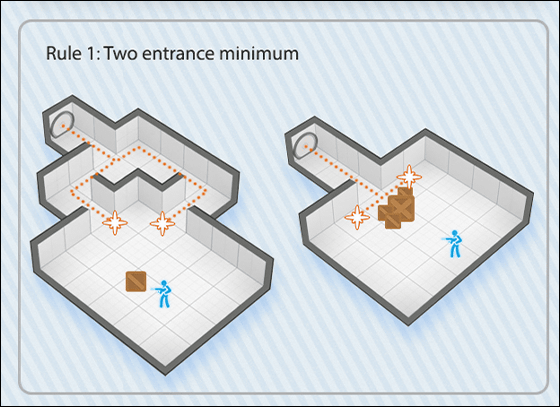
In order to minimize the place where the campers can lurk, place obstacles only on either of the two entrances or arrange the obstacles so that the attack options of attacking teams increase.
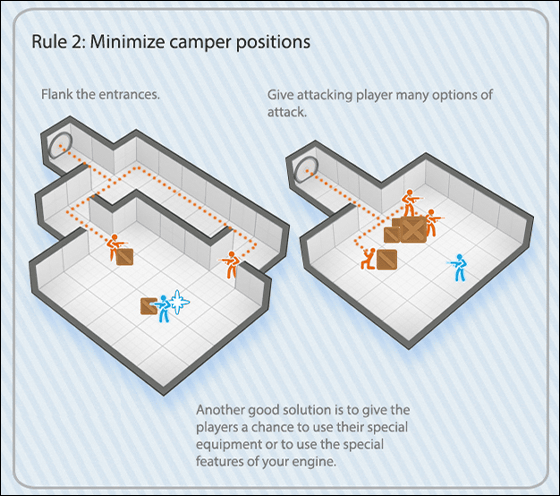
FPS players are familiar with how high you can aim the head shot if you aim at the height of the screen. To prevent this, map design with high and low is effective.
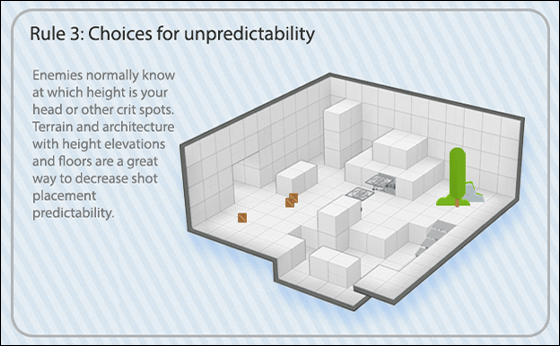
When preparing a special route like a loophole in the area, though it is dangerous to go through that road, it will be a high risk high return route that can create an advantageous situation if it passes.
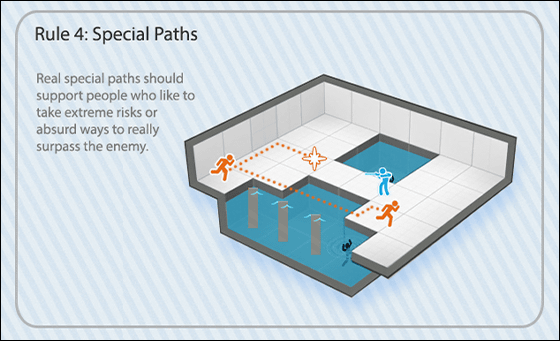
◆ 04: Map scale
The size of the map depends on the time it takes to reach a mission or reach an important battle area. In the map where the attacking team and the protecting team are balanced, it is as short as 15 seconds and as long as 45 seconds to encounter the enemy first. I will design a map thinking that it is short and 30 seconds long and 90 seconds long to reach the enemy line.
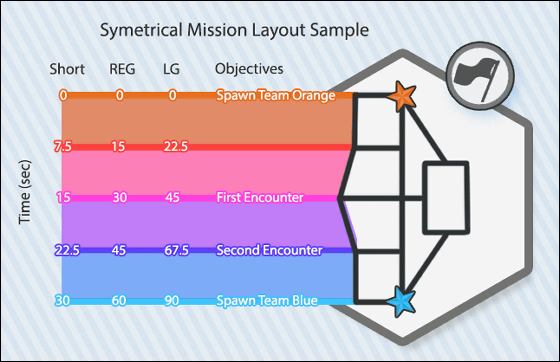
If the player's movement speed is 5 m / sec, the player advances in 10 seconds, if it is a flat road 50 m - If it is a road with a difference in elevation, advance 30 m.
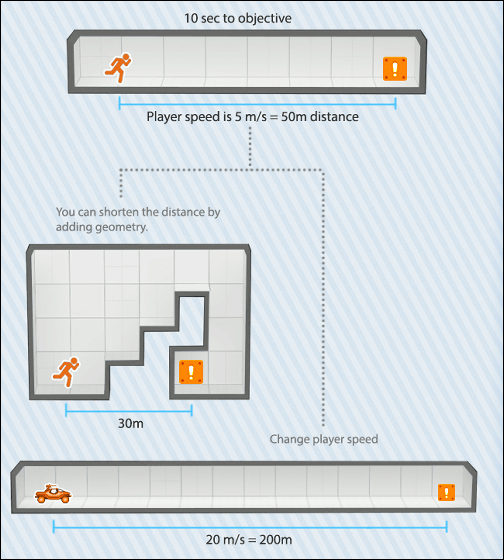
◆ 05: Placement and Navigation
When placing weapons and items on a map, set up stairs in front of the weapons and try to make the player think "something". Also keep in mind that most players remember the weapon position on the map. Also, if there is nothing near the entrance of the room, the player creates a situation that fears the enemy's attacks and hardly comes in. To prevent this situation, it is effective to install obstacles at the entrance of the room.
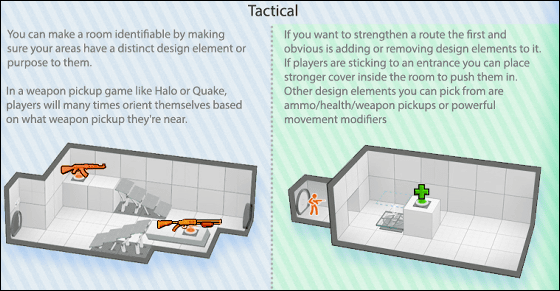
In order for players to grasp their current location, we make each area different, such as jungle and cave.
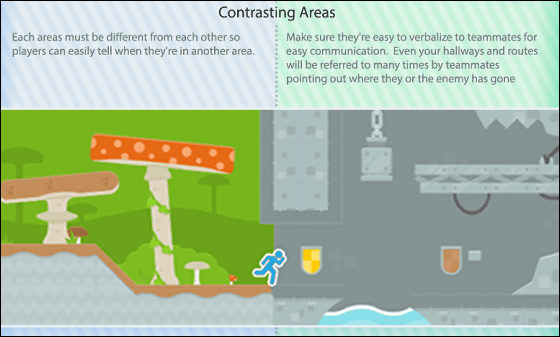
The focal point is to place the thing that attracts the player's attention to the position of the player's field of vision. Position the focal point carefully as it will become a signpost to the next area.
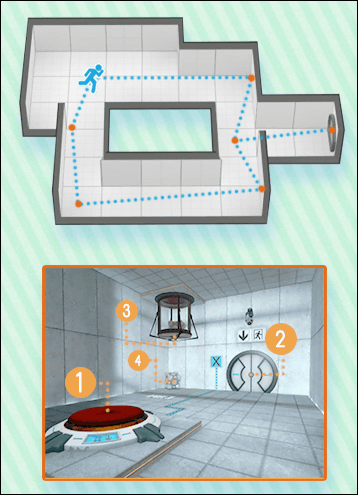
The focal point is arranged so that it is visible at the four corners of the center rectangle when dividing the player's field of view into nine equal parts.
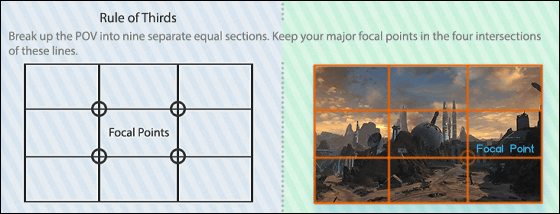
It is also important to add a story to the map. For example, if you divide the map in the area "village" "forest invaded by spiders" "spider's nest", the player can understand the place where the present place is and the concentration ability to the game rises.
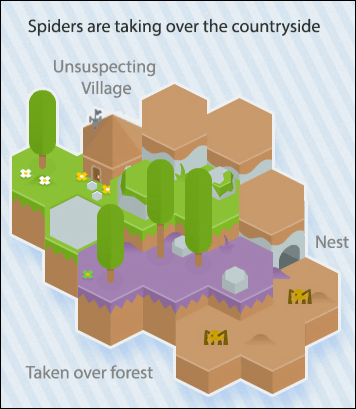
Making the story nature of the map also has a role of emphasizing the focal point. Signs that show what's behind the course, such as "Danger before this!" Or "Exit" are particularly effective.
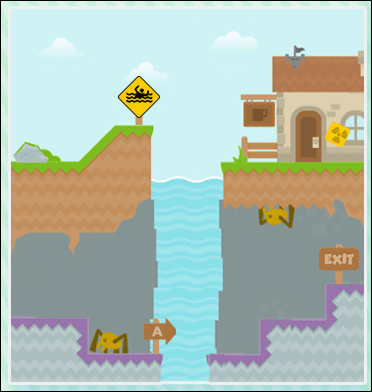
There are various things such as a signboard from item to a focal point, but the most important thing is a big building. Large buildings have a huge role in preventing players from getting lost and knowing their current location.
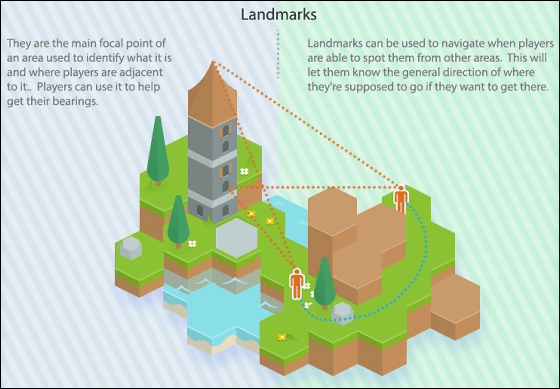
Writing is more important than coloring. Players recognize topographies and objects with shadows made possible by light or light. Lighting with high contrast is a powerful focal point.
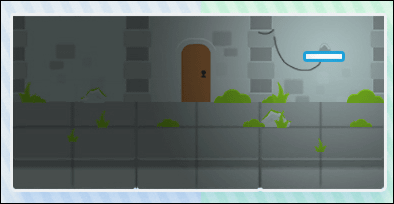
◆ 06: symmetrical map
It is easy to create symmetric maps and it is possible to balance teams of both sides. However, if you do not express big differences on the visual side on the left and right of the map, the player may become confused.
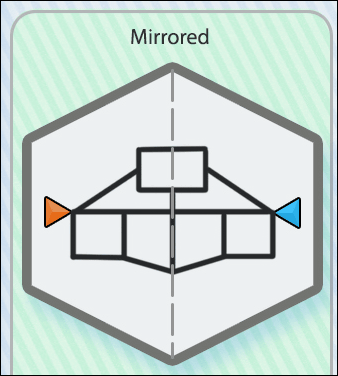
Bilaterally symmetrical maps are easy to create.
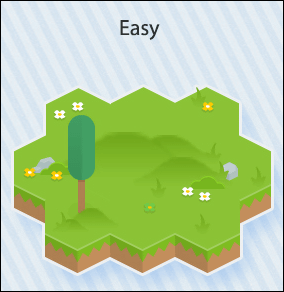
Bilaterally asymmetric maps are difficult to create and take time, but there are disadvantages such as difficulties in balancing both teams, but object placement and navigation are easier than symmetric maps.
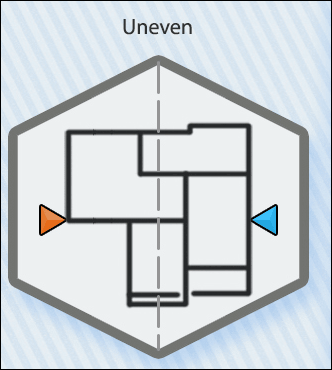
The asymmetric map as seen, the creation difficulty degree rises more than the symmetrical map.
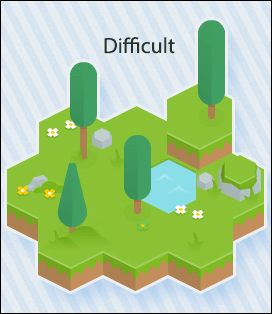
◆ 07: Character design
The two characters in the figure below have different properties and their nature affects the map design. For example, a character whose movement speed is fast and physical strength is high is a type that rushes without looking at danger. Players who use characters with slow moving speed and low physical strength will show their abilities with a wide map. It is also important to design the level design considering the characteristics of these characters.
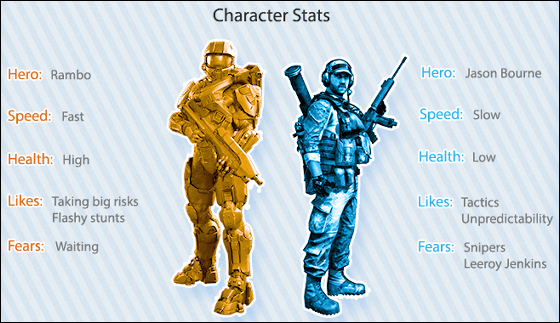
Related Posts:
